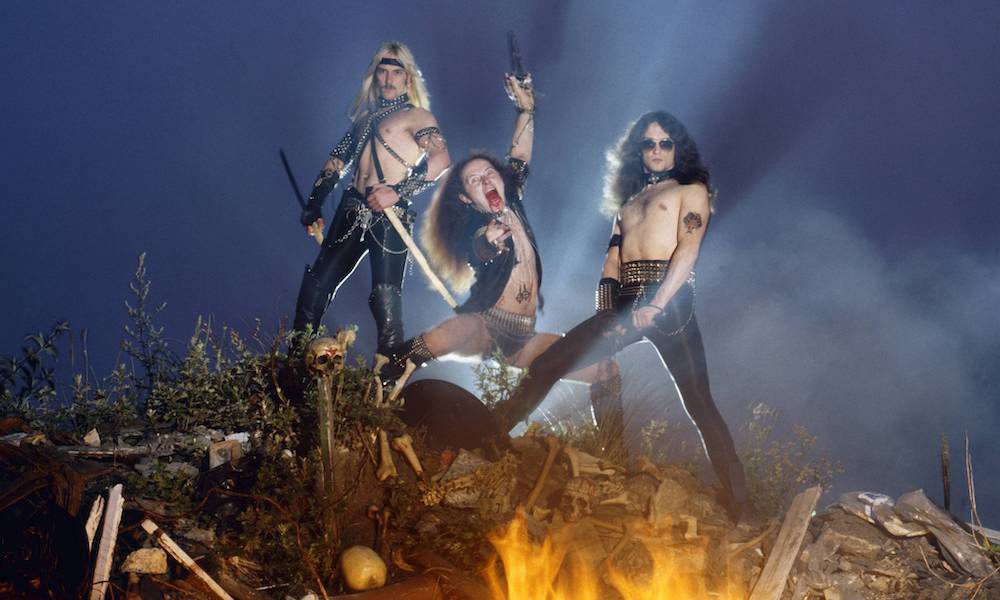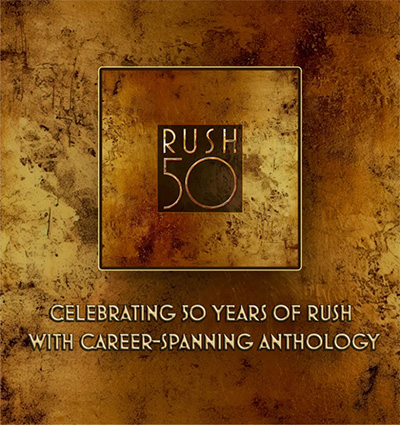Loud For Life Part 3: Thrash Metal Through The Gates Of Hell
Thrash metal established itself throughout underground clubs and tape-trading communities across the globe, thanks to the success of Anthrax, Slayer, Megadeth and Metallica.

By the mid-80s, the Americanisation of heavy metal – and the rise of thrash metal, in particular (as explored in Part 2 of our Loud For Life series) – helped establish the genre’s popularity, but did little to divert the mainstream media’s attention away from the pastel-colored pop bands that dominated radio and television. It did, however, come to catch the attention of the Parents Music Resource Center. Co-founded by Tipper Gore, wife of then Senator (and future US Vice President) Al Gore, and her “Washington Wives” comrades on Capitol Hill, the committee was formed in 1985, after Gore heard her daughter listening to Prince’s Purple Rain album and was shocked by the opening lyrics of ‘Darling Nikki’.
Calling for scrutiny of the lyrical content of all music, the PMRC exerted their influence on the RIAA (Recording Industry Association Of America), who agreed to introduce a range of warning stickers that would alert buyers of potentially offensive material. The PMRC also drew up a list of songs that they considered the most offensive. Dubbed the ‘Filthy Fifteen’, it included Prince (twice, thanks to the inclusion of Sheena Easton’s Prince-penned ‘Sugar Walls’), Madonna and Cyndi Lauper, but also sought to make public enemies of metal acts Venom, WASP, Mötley Crüe, Twisted Sister, Black Sabbath and Judas Priest.
However, the PMRC’s efforts backfired spectacularly, as their campaign only enticed a whole new audience to the genre, thanks to coverage from various mainstream news and media publications across the western world. On 19 September 1985, Twisted Sister vocalist Dee Snider, along with Frank Zappa and folk-rock musician John Denver, appeared in court to challenge the RIAA’s decision. Their testimonies convinced the RIAA to brand the albums with generic warnings, rather than descriptive labels that specifically categorized lyrical content.
Needless to say, the stickers did wonders for bands whose album covers bore the “Parental Advisory – Explicit Content” notice, as kids were naturally drawn towards purchasing music guaranteed to shock their parents. The controversy dovetailed nicely with the continued flourishing of thrash metal, which established itself throughout underground clubs and tape-trading communities across the globe, thanks to the success of Anthrax, Slayer, Megadeth, Exodus, Testament and the reigning kings of the genre, Metallica.

Slayer in Los Angeles, 1986. Photo: Chris Walter/WireImage
At the height of their popularity, off the back of the legendary 1986 album Master Of Puppets, Metallica received a devastating blow. On tour with Anthrax in Ljungby, Sweden, their 24-year-old bassist, Cliff Burton, was killed in a freak bus accident on 27 September 1986. Many bands would have struggled to come back from such a tragedy, but Metallica regrouped, found a replacement for their iconic bassist, and resolutely continued along their path towards becoming one of the world’s biggest bands – not only within thrash metal but within the music industry as a whole.
Metal music, too, continued to rise in stature. Throughout the mid-to-late 80s, acclaimed albums came from Bon Jovi (Slippery When Wet), Iron Maiden (Somewhere In Time), Slayer Reign In Blood and Megadeth (Peace Sells… But Who’s Buying?) (all 1986); plus Anthrax (Among The Living), Def Leppard (Hysteria), Mötley Crüe (Girls Girls Girls) and The Cult (Electric) (all 1987), to name a few. MTV jumped on the bandwagon too, dishing out a steady rotation of glam rock and metal videos to incalculable amounts of music fans across the globe.
Thrash metal’s popularity was escalating at an alarming rate, yet, as ever, divisions in taste, plus fans’ need for something even more brutal and aggressive, resulted in yet more metal splinter groups. Formed following the release of Venom’s Welcome To Hell and Black Metal albums (1981 and ’82, respectively), a number of groups began pushing the boundaries of the more chaotic side of thrash. Swedish outfits Hellhammer and Bathory released Death Fiend (1983) and Bathory (1984), respectively, while, in the US, Possessed issued 1985’s Seven Churches (regularly cited as one of the most influential and groundbreaking albums within the genre). Each of these albums laid the blueprint for death metal: a whole new world of aggression that, ultimately, provided the catalyst for Scandinavia’s far more disturbing descendant, black metal.
Considered the official home of death metal, Florida gave birth to a multitude of bands such as Death, Morbid Angel, Obituary, Deicide, and Autopsy, who took influence from metal’s very deep and dark subcultures. With lyrical content that tackled the most disturbing aspects of human behavior, death metal submerged itself in the blood-drenched world of graphic violence, Satanism and occultism – among other shocking and stomach-churning subjects. There has been much debate as to who first to referred to the genre as “death metal”, though most fans believe the term originated from the title track of an early demo by San Francisco quartet Possessed, whose singer, Jeff Becerra, claimed to have coined it during an English school project in 1983.
Much like its thrash predecessor, death metal emerged from the backstreet clubs and quiet neighborhoods of North America, before creeping across the country like a virus. Again, its popularity was a product of the tape-trading underground which, by now, had grown into an established network with a global community of die-hard fans.
By far one of the most important death metal bands was Florida-based Death. Led by the late Chuck Schuldiner (1967-2001), Death shook the genre to its foundations with their 1985 demo cassette, Infernal Death, and their seminal debut, 1987’s Scream Bloody Gore. Boasting Schuldinger’s guitar wizardry, the group took the brutality of Venom and Hellhammer, applied Possessed’s approach to melody and song-construction, and paved the way for other bands to expand their sound and take chances.
The late 80s and early 90s was a golden age for Floridian death metal, with a slew of essential albums coming out in 1989 (among them Death’s Leprosy, Obituary’s Slowly We Rot, Morbid Angel’s Alters Of Madness and Autopsy’s Severed Survival), and Deicide kicking off the new decade with the 1990 release of their self-titled album. By this point, however, the music had also reached other parts of the US, and highly acclaimed albums were coming out of New York (Cannibal Corpse dominated with 90s Eaten Back To Life, the following year’s Butchered At Birth and ’92’s Tomb Of The Mutilated) and Virginia (courtesy of Deceased’s 1991 offering, Luck Of The Corpse), while pioneering acts came from all over the country, including Chicago (Deathstrike), Wellsville, Ohio (Necrophagia), Flint, Michigan (Repulsion) and Santa Monica (Cryptic Slaughter).

Cannibal Corpse At Wetlands, 1994. Photo: Steve Eichner/WireImage
Globally, too, the music was gaining traction. Brazil gave birth to Sepultura, who made their mark with 1986’s Morbid Visions and the following year’s Schizophrenia. The UK threw up notable releases from Napalm Death (Scum, 1987; From Enslavement To Oblivion, 1988), Carcass (Reek Of Putrefaction, also 1988) and Bolt Thrower (War Master, 1991). Sweden’s contributions came from Entombed and At The Gates, who made their mark with Left Hand Path (1990) and Slaughter Of The Soul (1995), respectively.
Of the various strains of metal in the late 80s, none was more evil – nor more disturbing – than black metal. Distilling the essence of death metal, the music attacked listeners’ senses with a primitive arrangement of buzz-saw guitar riffs and primal, tortured vocals. Incorporating elements of NWOBHM, thrash, and death metal, black metal descended from the frostbitten regions of Scandinavia, incorporated elements of its predecessors, and dragged them far beyond the gates of Hell.
Some considered it to be one of the most experimental forms of metal to date. With groundbreaking new approaches to song structure, it welded a combination of high-pitched vocals and guttural death growls to blast beat tempos and long instrumental sections with varied time signatures. Bathory is considered Godfathers of the black metal scene, and its founding member Quorthon (aka Seth Forsberg) the visionary that helped shape its signature sound and ethos. Much like its death metal cousin, black metal took inspiration from the sinister side of human existence and evolved into one of metal’s most visually impactful subgenres. Leather, spikes, corpse paint, fire, and – at times – severed animal parts were common elements of its live performances.
As the Scandinavian scene flourished, a considerable number of local bands rose to the surface, among them Mayhem, Emperor, Gorgoroth, Enslaved, Darkthrone, Dissection, Immortal and Burzum. With band members adopting bizarre stage names, the groups reintroduced a fantasy element back into metal, largely for the first time since the NWOBHM’s heyday. They also indulged in radical behavior which, fuelled by a particular anathema for organized religion (Christianity in particular), led to a period of violent outbursts within the community.
Yet the ugly sound of black metal was a far cry from the NWOBHM – or any other metal subgenre. Also, after years of moral panic, for the first time in its history, heavy metal had a very real and dangerous side to it. The mainstream press reported brutal crimes taking place in Scandinavia, including, in Lillehammer in 1992, the savage murder of a gay man carried out by Emperor drummer Bård G Eithun (aka Faust).
Coincidently, during the popular rise of black metal that year, Norway was celebrating the 1,000-year anniversary of Christianity. A string of church burnings, led by fans and musicians alike, took place between 1992 and 1996 – a total of 50 arsons that attracted the attention of the global media. Burzum mastermind Varg Vikernes was the scene’s poster boy, and was convicted of four church burnings, as well as the murder of Mayhem guitarist Øystein “Euronymous” Aarseth in 1993. His eventual incarceration served to give him legendary status among die-hard fans of the genre.
Black metal was gaining mainstream exposure for all the wrong reasons, but some of the genre’s most celebrated releases are today regarded as cornerstones in the evolution of metal, and have enabled some of the world’s most extreme bands to achieve international popularity. Among these, Mayhem’s De Mysteriis Dom Sathanas and Dissection’s The Somberlain (both 1993) are essential, as are Darkthrone’s Transilvanian Hunger and Enslaved’s Frost (both 1994), along with Immortal’s Battles In The North (1995).
As heavy metal morphed throughout the ages, thrash, death, and black metal have arguably been its most important movements. Building on what came before, they broadened the genre’s horizons to a degree that founding members such as Black Sabbath and Iron Maiden could never have dreamt of. By the early 90s, metal had become a dominant musical force around the globe, with sell-out stadium tours and mammoth festivals, such as Donington’s Monsters Of Rock, attracting record numbers of attendees. Finally reaping the rewards from relentless touring and remarkable perseverance, many of metal’s founding bands had become multi-platinum-selling artists.
However, in the dive bars of LA’s Sunset Strip, just a few hours south of San Francisco’s thrash metal kingdom, the second wave of US hard rock was gaining momentum. Spearheaded by Guns N’ Roses in the late 80s, a new generation of bands was on the rise – and their antics would lead to the near fatality of the entire heavy metal genre. What lay ahead was something that no one had prepared themselves for.
Listen to the most thrashing cuts on our metal playlist.












